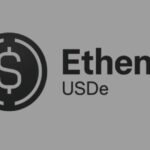American financial institutions have pressured Congress to impose stricter limits on stablecoin returns, asserting that such practices would inevitably provoke a mass exit of consumers from the conventional United States banking system.
Apprehensions that digital stablecoins will detrimentally affect American financial institutions by significantly reducing bank deposits are misplaced, and the actual utility of these digital tokens is not being fully considered, according to analysts at Coinbase.
“The ‘stablecoins will destroy bank lending’ narrative ignores reality,”
Coinbase policy chief Faryar Shirzad said on Wednesday.
“Most stablecoin demand comes from outside the US, expanding dollar dominance globally, not competing with your local bank.”
Shirzad distributed a market commentary asserting that the debates concerning the effect of stablecoins on bank deposits and credit creation “mirror comparable anxieties from previous advancements, like money market funds. However, they neglect to consider the actual applications and environments in which stablecoins are employed.”
American financial institutions have asserted that digital stablecoins that provide a return could rival traditional bank accounts and subsequently precipitate substantial customer fund withdrawals. Consequently, Congress has been strongly urged to impose significant restrictions on services that are offering yield on these digital assets.
Demand for Stablecoins Is Global, Not Just U.S.-Focused
In its detailed analysis, Coinbase contended that the majority of current stablecoin demand originates from “international users seeking dollar exposure” and is not driven by domestic consumers within the United States.
The report stated that stablecoins pegged to the US dollar are employed in developing economies to safeguard against the erosion of local monetary value, and these digital assets represent a “practical means of dollar access” for populations who are underserved by traditional banking.
The report further specified that roughly two-thirds of all stablecoin movements are executed on decentralized finance or other blockchain networks. “Consequently, they constitute the transactional infrastructure for a nascent financial layer that exists parallel to, yet mostly separate from, the domestic banking framework,” Coinbase analysts stated.
“Treating stablecoins as a threat misreads the moment: they strengthen the dollar’s global role and unlock competitive advantages that the US shouldn’t constrain,
Shirzad said.
Coinbase Says Community Banks Are Not at Risk of Collapse
Coinbase further contended that anxieties regarding community banks being severely impacted by expansive stablecoin utilization also hold little merit, clarifying that the characteristic stablecoin user “is not the equivalent of the typical clientele served by community banks.”
“Community banks and stablecoin holders barely overlap,” Shirzad said, adding that banks “could improve their services with stablecoins.”
Coinbase also stated that future projections indicating that trillions of dollars will flow into stablecoins throughout the forthcoming decade “ought to be thoroughly examined.”
“Even if stablecoin circulation reached $5 trillion globally, a majority of that value would still be foreign-held or locked in digital settlement systems, not diverted from US checking or savings accounts,”
it said.
Coinbase observed that commercial bank assets in the United States surpass $18 trillion and asserted that any effect which is created by stablecoins on these deposits will remain minor, while the international importance of the US dollar simultaneously would substantially grow.
Following the passage of the GENIUS Act earlier this year by the US, which sets forth rules for how stablecoin service entities are permitted to function within the nation, numerous significant banks and large financial organizations have introduced stablecoin products or are currently evaluating their options.















